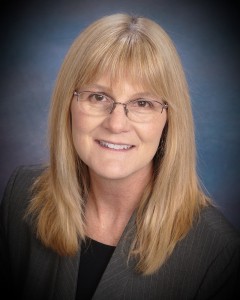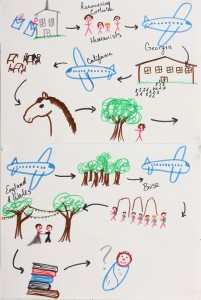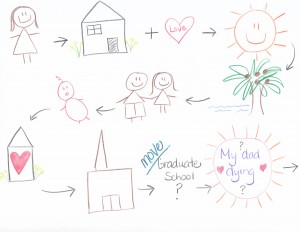I was raised with my mother telling me that the three things you were not supposed to discuss in polite company were religion, politics and money. Historically, counselors have also been hesitant to talk about religion or religious issues. This hesitancy is grounded in the profession’s belief in the  separation of church and state and the idea that counselors should never impose their values on a client. Additionally, there is seldom training on how to ethically navigate these areas as practitioners. Consequently, when issues in counseling turn to religion or spirituality, many of us quickly suggest that clients should discuss such things with their pastors, rabbis, priests, imams or other religious leaders. But the old thinking that a client’s religious or spiritual issues must somehow be kept separate from the rest of counseling has changed, thanks in part to the 2014 ACA Code of Ethics and the ASERVIC Competencies for Addressing Spiritual and Religious Issues in Counseling.
separation of church and state and the idea that counselors should never impose their values on a client. Additionally, there is seldom training on how to ethically navigate these areas as practitioners. Consequently, when issues in counseling turn to religion or spirituality, many of us quickly suggest that clients should discuss such things with their pastors, rabbis, priests, imams or other religious leaders. But the old thinking that a client’s religious or spiritual issues must somehow be kept separate from the rest of counseling has changed, thanks in part to the 2014 ACA Code of Ethics and the ASERVIC Competencies for Addressing Spiritual and Religious Issues in Counseling.
The ACA Code of Ethics requires counselors to practice within the boundaries of their competence, and counselors must be able to ethically and appropriately respond to spiritual needs presented by their clients. The Association for Spiritual, Ethical and Religious Values in Counseling’s (ASERVIC’s) spiritual competencies, revised and approved in 2009, have been endorsed by the American Counseling Association. The competencies complement and are consistent with the ACA Code of Ethics. Spiritual and religious beliefs are considered a part of the multicultural approach to counseling. In addition, they are relevant constructs of holistic philosophies that guide the counseling profession.
ASERVIC competencies
The stated purpose of the ASERVIC competencies is to recognize diversity and embrace a cross-cultural approach in support of the worth, dignity, potential and uniqueness of people within their social and cultural contexts. The competencies also help professional counselors meet ACA’s mandates to address spirituality and religion and to become competent before doing so. The competencies are as follows:
Culture and worldview
1) The professional counselor can describe the similarities and differences between spirituality and religion, including the basic beliefs of various spiritual systems, major world religions, agnosticism and atheism.
2) The professional counselor recognizes that the client’s beliefs (or absence of beliefs) about spirituality and/or religion are central to his or her worldview and can influence psychosocial functioning.
Counselor self-awareness
3) The professional counselor actively explores his or her own attitudes, beliefs and values about spirituality and/or religion.
4) The professional counselor continuously evaluates the influence of his or her own spiritual and/or religious beliefs and values on the client and the counseling process.
5) The professional counselor can identify the limits of his or her understanding of the client’s spiritual and/or religious perspective and is acquainted with religious and spiritual resources, including leaders, who can be avenues for consultation and to whom the counselor can refer.
Human and spiritual development
6) The professional counselor can describe and apply various models of spiritual and/or religious development and their relationship to human development.
Communication
7) The professional counselor responds to client communications about spirituality and/or religion with acceptance and sensitivity.
8) The professional counselor uses spiritual and/or religious concepts that are consistent with the client’s spiritual and/or religious perspectives and that are acceptable to the client.
9) The professional counselor can recognize spiritual and/or religious themes in client communication and is able to address these with the client when they are therapeutically relevant.
Assessment
10) During the intake and assessment processes, the professional counselor strives to understand a client’s spiritual and/or religious perspective by gathering information from the client and/or other sources.
Diagnosis and treatment
11) When making a diagnosis, the professional counselor recognizes that the client’s spiritual and/or religious perspectives can
a) enhance well-being;
b) contribute to client problems; and/or
c) exacerbate symptoms.
12) The professional counselor sets goals with the client that are consistent with the client’s spiritual and/or religious perspectives.
13) The professional counselor is able to a) modify therapeutic techniques to include a client’s spiritual and/or religious perspectives and b) utilize spiritual and/or religious practices as techniques when appropriate and acceptable to a client’s viewpoint.
14) The professional counselor can therapeutically apply theory and current research supporting the inclusion of a client’s spiritual and/or religious perspectives and practices.
Spiritual timeline activity
In 2009, Jennifer R. Curry published an article in the Journal of Creativity in Mental Health regarding the use of spiritual timelines with clients in counseling. She and Stephanie Dailey developed a lesson plan to expand the use of spiritual timelines to address counselor competency and to explore our own values, beliefs and attitudes about spirituality and religion. Their spiritual timeline activity assists clinicians and counselor educators in this exploration.
The activity involves an experiential component of developing a drawing and an accompanying narrative to highlight critical events, defining moments, developmental crises and other experiences that have contributed to spiritual development or challenged spiritual assumptions and beliefs. The goal is for professional counselors to become effective at addressing client spirituality issues by first becoming aware of their own.
When addressing spirituality in the classroom, I asked master’s-level counseling students to engage in the spiritual timeline activity. In addition, at the 2014 ACA Conference in Honolulu, I facilitated the activity for attendees at a professional presentation. I found that the spiritual timeline narratives were deeply personal for both the students and professional counselors and informed much of their own framework of working with clients. The following examples of three narratives and drawings demonstrate how this spiritual timeline activity contributes to awareness, competency and working more effectively with clients.
Dorinda
The timeline in Drawing 1 (above) belongs to Dorinda. Initially, she didn’t believe this activity would apply to her at all because she did not identify as religious. She has since expanded her view and now sees herself as a deeply spiritual person and clinician. The numbers in her narrative correspond with the figures in her spiritual timeline.
1) When I was a kid, we lived on the West Coast. My family did not go to church. My brother and I would sometimes attend church with friends if we spent the night at their house.
2) I remember talking with my mom about what religion we were. My dad was not raised in any religion, and my mom described herself as a “recovering Catholic.” My mom said that we were best described as humanists and believed in the good in other people.
3) We moved to a Southern state when I was in middle school. The move was a big culture shock. Religion was never a big issue where we used to live, but in this community, it seemed like people categorized others by what church they attended.
4) I went to church a few times with a girl of the same age who was my neighbor. They attended a megachurch, and I did not like the service. There was a lack of community, and we didn’t talk with anyone else; just went for the service and left right away.
5) My whole family was relieved when we moved back to the West Coast when I was a freshman in high school. When we were visiting the area to look at houses, we went to a café for breakfast on Sunday morning. Everyone was very casual and looked like they had just rolled out of bed and came down for coffee. We felt much more at home here where people were “real.” In the Southern state, we had known women who had never let their husbands see them without makeup.
6) I rode horses and spent a lot of time at the barn working and riding. My favorite times were early in the morning when I was alone with the horses as the sun was rising. It was so peaceful, quiet … almost spiritual.
7) When I was a teenager and young adult, I spent a lot of time outdoors and in nature. I enjoyed going for hikes alone or with friends. When I was upset, I would always go out in nature and usually to the beach.
8) My husband and I moved to Wales and then England after graduating from college. I was really depressed during this time and realized how important friends, family and a sense of belonging are to my well-being.
9) While living in England, I started working at a woodland organization teaching children. This was the first step in a slow process of moving toward a career in counseling.
10) We moved to Boise, Idaho, seven years ago, sight unseen. This was a big leap for us, and we ended up loving the city and found a great community of friends.
11) For two and a half years, I worked as an instructor in wilderness therapy. Some of my most peaceful and spiritual moments have been spent alone contemplating my life in the desert.
12) When my husband and I got married, neither of us had any close ties to religious traditions. Instead, we spent a lot of time researching different wedding ceremonies and ended up creating our own. We asked a friend to officiate, and she helped us come up with a beautiful ceremony that was much more spiritual than either of us would have created on our own but was so perfectly us.
13) Being in grad school for my master’s in counseling has been a spiritual journey on its own. I have spent a lot of time re-examining my own values and beliefs and creating a stronger core in myself.
14) The next step for me is thinking about having kids. I have been thinking a lot about how I was raised and how I might want to parent and raise my own kids in the future.
After engaging in this activity, Dorinda initially focused on using the spiritual timeline as an intervention when working with clients. As her counselor identity developed, she would bring questions about client spirituality into sessions to broaden the client’s perspective of how unique spirituality can be for each individual. She started observing how clients’ beliefs about spirituality contributed to the underlying themes in counseling sessions and how those beliefs and themes were interwoven into clients’ counseling journeys.
Dorinda now also believes that this timeline activity has facilitated an awareness of spirituality in her own life, including what aspects of spirituality are important and continue to develop in her, and how those aspects affect her work as a professional counselor.
Madeline
Drawing 2 (above) is a spiritual timeline by Madeline. Before engaging in the timeline activity, Madeline saw spirituality and religion as the same thing. She now separates the two and feels very comfortable broaching the topic of religion and spirituality with clients. The reference for each picture is labeled in parentheses with an accompanying age and brief description. Madeline was raised with a strong religious and spiritual belief system that has changed as a result of significant events in her life.
(Water, 4) — One of my first memories is a religious one. I was getting baptized in our church. I remember being scared of how long I would be underwater and remember knowing my parents were proud of me.
(Two Choices, Black or White, 4-12) — Growing up, there was always a right and a wrong for everything, per the Bible, and no gray. It made life simple and easy to understand.
(Church with lots of people, 13-18) — My social life in my teenage years was focused around church. I was a youth leader and very passionate about my faith.
(Equal Monster & Scale, 18-19) — In college, something bad happened to me despite the fact that I was doing everything “right.” I questioned how God could love the person who did that to me equally as much as He loved me. I did not want to participate in a religion where this was the case.
(Anger, 19-20) — I went through a period of being angry with God and at myself for believing in Him.
(Books & Questions, 20-24) — I decided I did not want to blindly believe in something again and began to research all of the religions in order to find one that made sense to me.
(Heart & Eye, 24-27) — I began to try and live my life using my mind and my heart, trying to balance the two.
(People affect one another, 27-30) — I realized that everyone affects one another through different types of energy. We are connected.
(My heart and energy affecting others, 30-32) — The realization that I can effect positive outcomes in others through using my heart and energy. This became my truth.
(Energy and love is in nature as well, 33 to present) — My truth extended to feeing the energy and love that is in nature and feeling connected to it.
Since completing her spiritual timeline, Madeline has found herself more comfortable discussing her own spirituality as well as embracing the topic with clients. For her, the spiritual timeline was a verbal and visual way for her to process and solidify her own personal journey and conclusions regarding her spirituality. Madeline has expressed more confidence and acceptance within herself and believes this leads her to feel at ease in discussing religious and spiritual issues with her clients.
Susan
Susan (see timeline above) was raised in a home with strong religious and spiritual beliefs that she continues to maintain. Susan feels very comfortable working with spiritual and religious issues with clients from varying backgrounds and belief systems. She said that knowing her own values and beliefs has helped her work with clients. She also recognizes that this is not the same for everyone.
Girl: This is me as a child. I am happy.
House: This represents the foundation for my spiritual development. Home is where I learned about myself and my role in the world. My spiritual beginnings/awareness began in my childhood home as my parents taught me important values. This is where I was first taught about families, forgiveness and service. I was also taught about prayer and a Heavenly Father who loved me, was aware of me and had a plan for me.
Heart: This is connected to my home — notice the plus sign. I feel love is the foundation for all my spiritual growth. As a child, I was shown love in my home and taught to love others. Love is what underlies so much of my spiritual beliefs.
Sun: This represents “The Son” or Jesus Christ for me. It is a central part of my spirituality. My belief in a Savior is what drives me to be a good person. My belief of love and family are connected to my belief in Christ.
Coconut Tree: This represents my college days. I was about 18-19, and I felt like I needed to find out for myself about the religion I was taught growing up. I felt like I couldn’t continue to say it was all true unless I knew for myself. This time in my life I did a lot of Scripture study and prayer. I came to know for myself that what I had been taught — that is, the faith of my fathers — was true for me also.
The couple: This represents my marriage.
Baby: This represents our first child. My spirituality increased as I became a mother. To hold a new baby and recognize the awesome responsibility I now had as a mom. The miracle of it all. The connection of love and family.
Home with heart: This represents my efforts at making our home a place of love. A place where spirituality can grow. A place where my children can learn how to pray and receive their own answers. A place where my family can learn the important values I learned as a child.
Church: This represents a place of continued learning and opportunities to serve others. My church is very important to me and has been my whole life. It is a place to expand on what I already know. It is a place to continue to feel and recognize love and truth. It is also a place to be with others who share similar beliefs.
Moving/graduate school: This has been a few challenging years for me. I went through several months of depression after moving to a new state. My children were starting to leave home. Baby No. 1 got married. I felt like things were changing for me. My decision to go to graduate school was made after much thought and prayer. I felt like Heavenly Father was guiding me toward this. I felt an answer to my prayers that this is part of some plan for me. At times throughout graduate school, I have felt that other students viewed spirituality as stifling or oppressive. Sometimes I have had to examine my own beliefs. I have come to recognize my beliefs and my spirituality as a great benefit/advantage over someone without beliefs.
Sun (Son)/my dad dying/hearts/question marks: This represents a difficult time but a powerful time spiritually for me. In my second year of graduate school, my dad was dying. I knew he was going to die. I recognized the truth in my heart when I prayed. I didn’t want to lose this man who taught me all about love and family. A man who served selflessly and taught me by his example. A man who was central to my spiritual growth. His death was one of the most spiritual things I have ever witnessed or felt. My beliefs of love and family and a Heavenly Father were actually strengthened during this time. His dying also brought up questions about the afterlife. I knew what I believed, but now it was being put to the test. His death has continued to expand my growth spiritually.
What’s next: I know that my spiritual growth will continue. I welcome what may come. I am who I am because of my spirituality. It is fair to say that my spirituality is stronger as difficulties come.
Through the spiritual timeline activity, Susan became more aware of her own spiritual journey. She found that she had often failed to recognize the changes and growth in her life, especially when she was in the midst of a challenge. This activity helped her gain that awareness.
Looking back on her timeline, Susan was able to recognize how some of the most challenging things in her life promoted the greatest amount of spiritual growth for her. Susan says that now she recognizes how spiritual and religious values are different for each person. She does not feel afraid of incorporating client spiritual and religious beliefs into sessions.
Conclusion
The three emergent or professional counselors who have shared their timelines are from different backgrounds and have different beliefs regarding spirituality and religion. Dorinda was raised with humanistic values and beliefs and initially did not think this exercise on religion and spirituality applied to her. Madeline came from a family with strong ties to religion. However, she has moved away from those ties to develop her own set of values and beliefs around spiritual and religious issues. Susan maintains the religious and spiritual beliefs from her family of origin and continues to grow and develop within those beliefs. It has been valuable for each of these counselors to understand their own beliefs. As a result, all three feel comfortable and competent when addressing issues in counseling with a client from any religious or spiritual background.
It is important to understand how a client’s worldview and psychosocial functioning are influenced by his or her beliefs or absence of beliefs surrounding spirituality and religion. As ethical and competent professional counselors, we are required to explore our own attitudes, beliefs and values about spirituality and religion and continually evaluate how these things influence our work with clients and the counseling process.
The main point is this: Counselor, know thyself! It is imperative to know our own spiritual and religious beliefs before working with clients and incorporating or addressing religious and spiritual concerns in counseling. The use of spiritual timelines is one way to connect more with our own development of spiritual and religious beliefs. Anyone who would like to engage in the spiritual timeline activity can go to the ASERVIC website at aservic.org, click on the “ASERVIC Teaching Modules” link and scroll down to “Exploring Spirituality Across the Lifespan With Timeline Developmental Milestones, Defining Moments, Changing Beliefs and Practices.”
*****
Knowledge Share articles are developed from sessions presented at American Counseling Association conferences.
 Lynn Bohecker is a postdoctoral fellow at the Idaho State University Center for Health Research and will be a senior lecturer for Messiah College in the fall. She received a 2014 ASERVIC research grant to conduct research on the use of spiritual timelines in counselor education. Contact her at bohelynn@isu.edu.
Lynn Bohecker is a postdoctoral fellow at the Idaho State University Center for Health Research and will be a senior lecturer for Messiah College in the fall. She received a 2014 ASERVIC research grant to conduct research on the use of spiritual timelines in counselor education. Contact her at bohelynn@isu.edu.
Letters to the editor: ct@counseling.org




Comments are closed.